Philosophy / Jesse Prinz’s Surrealist Embarassment
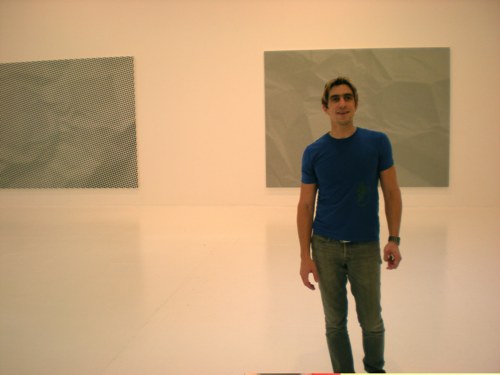
With all these music and art and design posts, we couldn’t resist waxing philosophical. On a recent trip, I met with philosophy Professor Jesse Prinz at NYC’s Deitch Galleries and was so excited about this interview I forgot my wallet. (Thanks for coffee, Jesse!). There, he talked about art history, the similarity between moral judgment and aesthetic judgment and why porcelain cats can be political. Jesse is a Professor of Philosophy at C.U.N.Y, former Adjunct Professor at the University of North Carolina at Chapel Hill and an advocate of Experimental Philosophy.
Let’s get right to it: What is, in your opinion, the role of emotion on aesthetic judgment?
I think all judgments of value are expressions of emotion, so if you say something is good – morally good, for instance – what you’re doing is expressing the way you feel about it. And when you say something is beautiful or aesthetically good, you’re also expressing the way you feel about it. If deprived of emotions we would have no ability to see the world as either attractive or unattractive, as beautiful or ugly, or as moral or immoral. Someone could describe the features of a work, its proportions, the different parts that make it up but would be left wondering “is it a successful composition?” For that, we need to have an emotional response.
How do these emotions – and these emotional responses for that matter – come about?
Well, to a certain degree we may have an innate disposition to find certain things more or less attractive. It is obvious in the domain of social judgment that we find some people more beautiful, more appealing. It may be true even in the case of distinguishing between attractive and unattractive, say food sources, where we might be drawn to a fruit that looks heathy and symmetrical as opposed to one that looks decayed or rotten. But somehow these abilities to distinguish the pretty from the ugly get co-opted by culture and start being applied to objects that human beings have created. We know that from fairly early on in human evolutionary history people were using things like pigments, presumably to paint their bodies, but maybe also to paint the places in which they lived or the tools they used. At about fifty-thousand years ago we see a huge expansion in the use of pigmentation, carving and raw aesthetic concern in the manufacture of tools and objects. It is likely, given the recency of this explosion that this is not something we do innately. But our capacity to do it, at some critical point in history was extended from aesthetic judgments of people and foodstuffs onto artifacts and objects.
So these co-opted emotions can be shaped by culture. You make, in one of your books a case for moral relativity in which you oppose the notion of hard-wired moral standards and instead argue for something that is socially embedded and culturally specific, at least to a degree. Is the case of aesthetic judgment similar to that of moral judgment or does it function differently?
I think the story is precisely the same. Within art there is tremendous variation, and beauty in a large degree is in the eye of the beholder. We may find some commonalities. If we go back to judgments of human beauty, you see certain agreement, cross-culturally, about what would be an attractive face; a face that’s symmetric, youthful. In women’s faces, large eyes, full lips, small noses. Basically, the most typical face is the most attractive. And that may be due to the fact that in order to recognize that somebody is a person, we compare them to a stored prototype or average of all the faces we’ve seen. And the closest to that average is the easiest to recognize, the easiest to process by the brain, so we see them as more attractive. But beyond that simple element of universality, variation is the norm. Some cultures find lip-plates attractive, others find neck-rings attractive, others are drawn towards scarification, others adorn lips with cosmetic products, some people do cosmetic deformations of the body. Views about the girth of the body: whether heavier bodies or slimmer bodies are more attractive vary significantly from place to place. And if we move outside of human attraction, in terms of attractiveness of other people, into artworks, the range of variation cross-culturally becomes virtually unbounded
Aesthetic preferences are, then, to a certain degree, culturally bound, and we see a great degree of variation even within cultures – ladies with porcelain cats living next door to art collectors. Could you walk us through how these preferences come about? How do emotions affect this process?
There are multiple dimensions that matter. One of them is familiarity. Exposure to a certain kind of object will make it increasingly attractive. This works under the same principle mentioned before: as you learn to recognize objects, you store more and more of the examples you’ve seen. If you make aesthetic judgments based on ease of recognition, the familiar should become more attractive. But with aesthetic judgments there are factors that extend beyond these knee-jerk responses of beauty. There is a socioeconomic dimension of art appreciation, where we identify our status by choosing certain kinds of artworks. To be somebody who is interested in high art, to visit museums and appreciate the things art critics tell us are good, is to call attention to the fact that you belong to a certain social class. To that extent, our tastes are somewhat dictated, arbitrarily, by the current trends of the professional artworld. And conversely, those who consider the artworld to be an effete intellectual elite, will identify their tastes, in part, contrastively. by clinging to objects that members of that elite will regard as hokey, or kitschy or passé. So collecting porcelain cats is a defiant way of saying “I refuse to be mistaken for one of you intellectuals”
Lets talk now about art and design movements and their effect on critical movements in visual arts. Does a new art aesthetic (i.e. cubism) create a sensibility for that kind of art or does a pre-existing sensibility help that new aesthetic come about?
I think it has changed over time. There was a time when the major consumers of art were wealthy merchants, there was a time where the major consumers were political figures, or religious institutions. I think in the twentieth century, there was a time where the artist really did have a great deal of control, when they were doing things unsanctioned by the art elite. And in some ways their work was so shocking and so new that attention was inevitably drawn to them. But in the mid-twentieth century we see a shift to critics. If you look at abstract expressionism, famously people like Clement Greenberg were instrumental in establishing this as an important or significant development in art. After that you see a period where gallerists or curators start to become more important. Art is being seen in galleries, not in the mansions of the wealthy or the places of worship we have a new ability to shift the locus of control from the superwealthy to a particular segment of the commercial population, the gallery. Art has become dependent on gallery sales and gallery preferences which are driven in part by market interests, which start to play a significant role in shaping the course of artistic innovation. One interesting exception to this that returns us to the trends of the early twentieth century is the Young British Artist movement in England in the 1990’s where art students got together and started exhibiting their own work in galleries and spaces – warehouse spaces that they, themselves had rented. And by producing works that were shocking they were able to attract the media attention required to make sales and gain visibility within the art community. But for artists trying to do that without art that is newsworthy, art that is shocking, would be nearly impossible now. So the art scene is to a great extent dependent on curators and gallerists.
Would you say that has something to do with the history of a particular style, that something has been done and is not so transgressive anymore? Or could this be due to a kind of democratization of access, of being able to get out your message that produces this sense that we need someone decide and mediate what is good or worthwhile?
More than that, I think it’s simple commodification. Art has become a commodity. And the success of the commodity probably depends on the balance of being familiar and being innovative. Especially in a hyper-individualistic society where we have a tendency to think that each artist needs to do something entirely new. But consumers are not going to get excited by something that doesn’t look like the things they have com to recognize as good art. So I think those two constraints force a general pattern of progression that is both constantly in flux but relatively continuous. You don’t tend to see great breaks or discontinuities. Every so often we see a sudden shift, but the sudden shifts often come from external factors in the broader cultural context. So for example, in the 90’s one of the other things that happened in art was increased interest in artistic representations coming from parts of the world coming outside of the United States and Western Europe. And there was, in the intellectual community, a lot of discourse about post-colonialism that had been shifting focus in that direction. So it was natural in that context that consumers of art start to look beyond the European and American worlds for other voices. Interestingly, though, the work that’s been imported from elsewhere tends to be what is most similar to the work we were consuming here.
Perhaps this constant of continuous flux remains just that, but would you say the speed in which this progression moves has varied or accelerated?
There certainly was a great acceleration in the Twentieth Century. And if you tell the narrative history of art, the kind you would find in an art history book, you would see it as a series of successive movements. And the rapidity of those movements shifts from scales of centuries where we see Renaissance and Mannerism followed by Baroque followed by Rococo and Neoclassicism shifting to a scale of decades. So we see the modernist movements of the 1910’s like Cubism and Futurism being succeeded by Dada and Surrealism and up into the fifties with Abstract Expressionism, sixties with Pop, seventies with Op and Super-realism, eighties with Neo-Expressionism and Graffiti art, nineties New British Art and so on. I don’t think we’ve seen evidence for increase in speed. One might expect that with the digital age, artistic movements may happen at a greater rate than they have in the past, but market forces may prevent that from happening. But it is also possible that the rapidity has increased and we just can’t detect it. In fact one possibility is, a reason why we can’t identify coherent movements in the new millennium is that the movements are so small and so fast that they lack the duration to be recognized as such. So I don’t think we know yet whether there has been an increase in speed or a slowdown in innovation.
Anecdotally, do you find that these changes in preference apply to you and affect you as an individual and as an art consumer? If so, how so?
Well, I think art right now is at a very interesting stage. We have a prospect of art based on new media. In the 1960’s it was announced by conceptualists that painting and sculpture are dead. That funeral was premature, painting and sculpture are alive and well, but rather than replacing or eliminating them, it is more likely that they will be accompanied by new media for artistic expression. That said, there have been very few artists that have emerged using new technology. There are a few, but if we ask “who in the last thirty years will get entered into the art history books?” we can mention some great innovators like Nam June Paik, we can mention some of the important video artists like Bill Viola but we still don’t have household-name computer artists or web artists, and I think one reason for this is a learning curve; these technologies are   simply not yet at a point where the typical student in art school can master the skill-set to use them in exciting ways. We need whole communities of artists using this stuff before the great innovators emerge from the crowd. I think the other issue is that it is not exactly clear how to sell and market these works. People don’t want to put a video installation in their living room. Web art doesn’t produce any revenue. So market pressure creates another constraint on the development of art in these new directions. For me, in respect to specific things that appeal to me, one is just an idea, the idea of where art is going, what potential it has. Those who announced the death of art in the beginning of the twentieth century, I think were premature because with the development of technology we’ve seen that art can actually transform in very exciting ways. Who will lead those transformations remains unclear. Other than that, the areas of art that I’ve found most exciting are those that have called on voices that have been disenfranchised in the history of art. I mentioned Post-Colonial art before but maybe even more significantly, I would mention Feminist art. There is a sense looking at the history of art, that only men produce artworks. That has begun to change, has been changing for decades now, but we’re finally at a point where we have women artists who are as significant as male artists, and not simply in virtue of being women artists is a real possibility. So among the most exciting contemporary artists, we find people like Mona Hatoum, who happens to be a woman of middle-eastern descent and those themes are important to the work just as everyone’s biographical background informs their work. But her success as an artist transcends her identity and her gender.
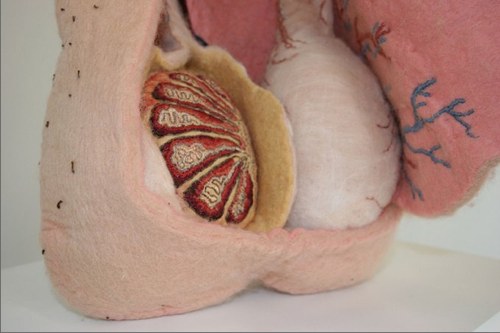
You are married to a woman artist yourself. How is the discourse around art in your household? Do you fight over artistic philosophy? Actually, I have to ask: are your fights as intellectual as one would imagine or do you just fight regular-folk style?
I think they’re probably regular people fights though, I have to say that on aesthetics we’re pretty compatible. I think some partners choose each other on the basis of similar backgrounds or food tastes or passtimes, we have those things too, but I think it was our aesthetic compatibility that has helped seal such a long-lasting bond. My wife Rachel Bernstein creates art using fabric and other materials that have been disenfranchised because of their association with craft, inherently feminine, inherently inferior to the media of the high arts like paint , especially oil paint, and sculpture made out of stone or sometimes wood. But she creates works that represent traditional themes in the history of art, especially themes from nature and from the human body; so human innards, organs created out of felt. Or molds and fungus created out of felt that can take over a subway car or can take over an interior space. I think when we disagree about art it is often at a very local level: a particular work in an exhibition might be my favorite, and might be her least favorite or a particular object of art may strike me as particularly exciting and might strike her as trite. But overall we agree.
Her work is not work I would create, so in one sense our artistic identities are very very different, and I think her work reflects her own preoccupation with something like the boundary between the natural and the artificial. What is nature and how does nature reflect the manufactured world. I think my own interests in art tend to gravitate more towards the themes we see in conceptual art. Themes that are at the level of very very abstract ideas, which probably reflect my own training as a Philosopher. There is obviously a conceptual dimension to the natural/artificial boundary, but on the other hand, nothing could be more concrete.
So, if she were to suddenly change her aesthetic from one minute to another, would that be a dealbreaker?
Absolutely! (laughs)
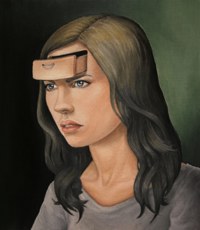
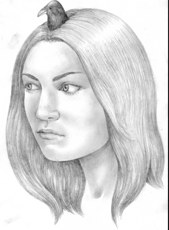
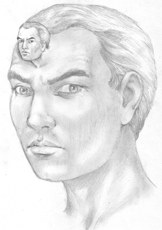
In your website you have these drawings of heads with all these themes coming out of them. Would you label that conceptual art? If so, could you mention two or three and what they set out to communicate?
I began some years ago drawing heads during academic lectures. The idea was that each one should be a very generic head with something happening to it. Something coming out of it or on top of it, bland facial expression like we are constantly inundated with in magazines but being molested in some way. The idea of a head with something coming out of it might appeal to certain european artists in the 1920’s, but would be pretty passé in the artworld today. I have never liked surrealism as an art movement. I think there were some great surrealists especially in cinema, but I think it was an overly commercial, illustrative and at times cheesy episode in the history of art. So for me to create surrealist works would be something of an embarrassment. My way of saving grace is to redefine them as conceptual art, and my way of doing that is not to focus on the individual works, but rather in the compulsive exercise of the collective. So my current goal is to create a thousand of these works, and the idea of attending an academic lecture, which is after all a kind of intellectual performance, and germinating a head that is generating some sort of object, and doing this in a very large scale, gives the individual works a kind of contextual meaning that is much greater than the sum of the parts.
Is a particular head related at all to a particular lecture, or is it just what pops into mind?
Almost never, although I guess the surrealists, with their fascination with Freud and dreamworks might say there is some revelation about my subconscious reaction to the content of the talks.
Lastly, what would you like to say to readers of The Gopher Illustrated?
I would say that The Gopher, to me, represents what magazines should be. Just as there is a sense in which new media will transform the way art is done, I think that new media are transforming the way magazine communications are done. And just as we can only gain traction in art by keeping one foot in the tradition and stepping into new terrain with the other, the philosophy behind The Gopher is precisely that. And I also think it represents a blurring of a boundaries that is meaningful to me, personally, between philosophy, design, art, culture. The sense that each of these is isolated and independent is, I think, a gross distortion. And what I’d like to see with the future of the Academy in higher education, the future of science and humanities is a total disintegration of the boundaries that have separated the fields. Few magazines have taken that as their guiding philosophy. They tend to be compartmentalized, if they cover more than one area, into little separate modules. My understanding of The Gopher is that it really is part of that disintegration campaign, so I very much applaud the effort.
[Many thanks to Jesse Prinz for the head drawings and to Rachel Bernstein for her artwork]




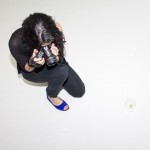


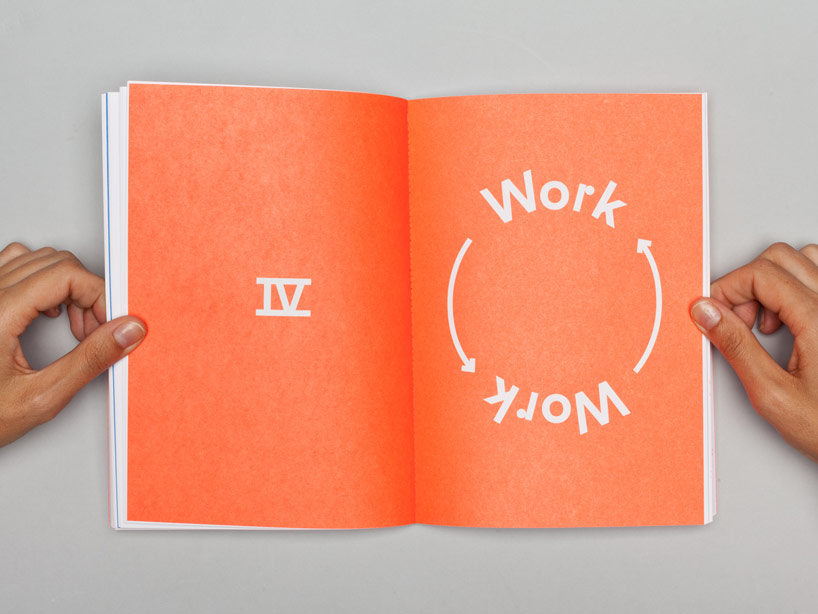


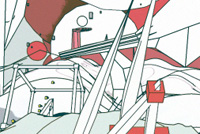
Leave a Reply